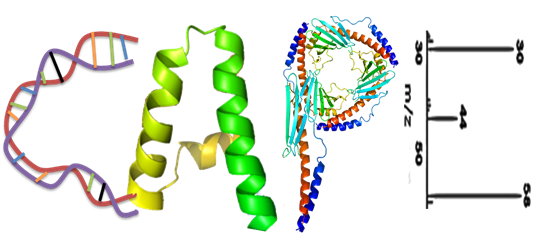![]() What's it?
What's it?
Protein domains are structural, functional and evolutionary units of proteins. So, it’s important to resolve the domain features to get full understanding of the structural, functional and evolutionary characteristics of the proteins. However, there’s lack such a platform to do that automatically and comprehensively. Here, we propose the ProDoctor, a one-stop platform for the protein domain feature analysis.
![]() How to use it?
How to use it?
Help There are three function modules in ProDoctor. One is the One-stop analysis of domain features. The second module is the "single feature analysis". The third module is the "over/under-representation analysis". The Google Explorer is recommended for this platform. One-stop analysis manual The input data for One-stop analysis is a FASTA file of protein sequences. The users may select the methods for domain identification: RPS-BLAST or HMMER search. The outputs of this module include the domain list and domain features at two levels: domain level and protein level. At the domain level, there are three result tables: amino acid composition of domain, domain structural disorder ratio (DSDR) and domain age. At the protein level, there are also three result tables: domain numbers of proteins, the distribution of DSDR and domain age in one protein. There are two forms for the outputs. One of them is a downloadable compressed file consisting of the results. Another one is to display the results on the web page directly. Single feature analysis manual With this module, the users can do the feature extraction based on the domain identification results obtained by themselves. The input formats are different for each feature. There are instructions and examples for each feature in the page of this module. Feature 1: Amino acid composition This module is used to calculate the amino acid compositions (percentages) of sequences of protein domains. Users click on the "Choose File" button to select a local input file, which includes domain IDs and domain sequences, and then click the "Submit". The output is a downloadable file. Feature 2: Domain structural disorder ratio Users can enter protein ID directly and click the "Submit". If Protein ID is included in our database, the output file is downloadable. Users also can click on the first "Choose File" button to select a local input file, which is a domain information file, including protein ID, domain residues starting position and ending position residues. Click on the second "Choose File" button to select a compressed folder containing a number of local input files. The input files are the results of disordered production by IUPred software. Click on "Submit" and the output file is downloadable. Feature 3: Domain age Users can enter Domain ID and select species, and then click the "Submit" button. Then you will get the domain age. Another way, users should select species needed to calculate the age of the domain in the drop-down list, including Zebra fish, Escherichia coli, Drosophila, Yeast, Human and Mouse. Click on the "Choose File" button to select a local input file, including domain information of specified species. Click on "Submit" button and the output file is downloadable. The output consists of protein ID, domain ID, domain age and domain age grade. Feature 4: Evolutionary rate Users can enter sequences of domain pairs or a local input file of sequences of domain pairs and select species. Then click on "Submit" button. If cDNA sequences coding domain pairs can be found in the cDNA sequences saved in the database, users will get the downloadable result file. If cDNA sequences coding domain pairs can't be found, users should enter "cDNA Sequence File" coding domain pairs. Then click on "Submit" button and get the downloadable result file. Feature 5: Domain number Click on the "Choose File" button to select a local input file, including the domain information. Then click on "Submit" button. Users will get the downloadable result file. Feature 6: Distribution of DSDR Click on the "Choose File" button to select a local input file, including disordered structural domains ratio (DSDR) information. Then click on "Submit" button. Users will get the downloadable result file. Feature 7: Feature of domain age Click on the "Choose File" button to select a local input file, including domain age information. Then click on "Submit" button. Users will get the downloadable result file. Over/under-representation analysis manual With this module, the users can explore the characteristics of a subset of proteins compared with all the proteins encoded by one genome. The input for this module is Ensembl Protein ID list from one of six species, H. sapiens, M. musculus, D. rerio, D. melanogaster, S. cerevisiae and E. coli. The protein classification is according to the domains in it, domain features (DSDR or domain age), domain numbers in proteins and the distribution of DSDR or domain age. The users can select one of the classification methods. The analysis is based on hypergeometric distribution model and the P values are corrected using theBenjamini–Hochberg method.The output is a table containing the values used in the analysis and the over/under-representation strength values. With these analysis modules, the users can do the protein domain features exploration based on their own study. Different datasets, e g. wide-type and mutational protein sequences, or a list of homolog pairs, can be used to the analysis to get their different features in domain characteristics, which are significant for their deep study.
![]() Institute
Institute
Beijing Proteome Research Center(BPRC) (北京蛋白质组研究中心)
![]() Author
Author
Chen Qiu(邱晨),Chong Ma(马冲),Pan Shen(沈磐),Fuchu He (贺福初), Dong Yang(杨冬)
![]() Support
Support
![]() Publication
Publication
![]() Funding source
Funding source
[{"id":"1","name":"CNHPP int'l project 3:2014DFB30020(中国人类蛋白质组学数据的知识发现)"}]





